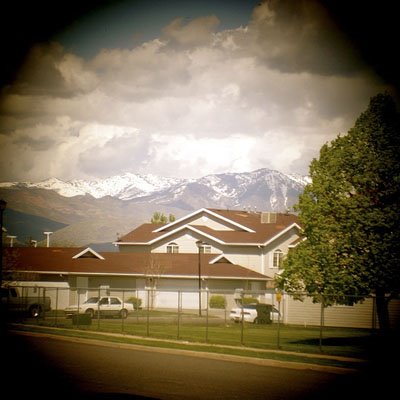DIY: Digital EOS Holga
UPDATE: You do not have to DIY this now if you do not want to. You can buy it, ready-made, for less than the DIY version would cost. Sweet. See update at end of post. -DH
 OK, so maybe this isn't really a strobe thing at first glance.
OK, so maybe this isn't really a strobe thing at first glance.
For those who do not know, Holgas are the funky, artsy, cheapo, 2 1/4 format plastic cameras that have many people diving back into the soft, light-leaky retro look.
Looking at the photos from this hybrid Digital EOS/Holga got me to thinking how great this could look with some hard flash thrown in there mixing with the ambient. The plastic lens distorts and softens hard light into something ethereal and beautiful.
Photographer Joachim Guanzon has mated a real, sawed-off Holga lens to a Canon digital camera. Even better, he has set up a web page to teach you how to do it yourself. (To any lensmount, really.)


The above pictures are not from an actual Holga, but from Joachim's digital hybrid version. You either love the look or you hate it. Personally, I think there are times when it can be awesome.
You'll need to buy (or find) a Holga and destroy it to make the hybrid. It's ok - they are very cheap. You'll also need a Dremel tool, (or a file and a heckuva lot of patience.)
__________
UPDATE:
Since this post first appeared, there has been a cottage industry in mating Holga lenses to the body caps of popular cameras. They are ready-made, and cheap—as in just $25. You can get them for Nikon or Canon, shipped Prime from Amazon.
I have used them on Nikons, and currently use them on my Fuji mirrorless cameras. You can easily adapt the Nikon or Canon versions to nearly any mirrorless mount adapter, which are also pretty cheap. (Example linked is Nikon-to-Fuji).


This lens, along with hard lighting, is a technique I use pretty frequently to get a different vibe to a portrait. And it is as easy as swapping lenses and putting a super-cheap piece of plastic on that expensive camera.
(Click on either of the two photos just above for a full On Assignment post on how they were made.)
 OK, so maybe this isn't really a strobe thing at first glance.
OK, so maybe this isn't really a strobe thing at first glance. For those who do not know, Holgas are the funky, artsy, cheapo, 2 1/4 format plastic cameras that have many people diving back into the soft, light-leaky retro look.
Looking at the photos from this hybrid Digital EOS/Holga got me to thinking how great this could look with some hard flash thrown in there mixing with the ambient. The plastic lens distorts and softens hard light into something ethereal and beautiful.
Photographer Joachim Guanzon has mated a real, sawed-off Holga lens to a Canon digital camera. Even better, he has set up a web page to teach you how to do it yourself. (To any lensmount, really.)


The above pictures are not from an actual Holga, but from Joachim's digital hybrid version. You either love the look or you hate it. Personally, I think there are times when it can be awesome.
You'll need to buy (or find) a Holga and destroy it to make the hybrid. It's ok - they are very cheap. You'll also need a Dremel tool, (or a file and a heckuva lot of patience.)
__________
UPDATE:
Since this post first appeared, there has been a cottage industry in mating Holga lenses to the body caps of popular cameras. They are ready-made, and cheap—as in just $25. You can get them for Nikon or Canon, shipped Prime from Amazon.
I have used them on Nikons, and currently use them on my Fuji mirrorless cameras. You can easily adapt the Nikon or Canon versions to nearly any mirrorless mount adapter, which are also pretty cheap. (Example linked is Nikon-to-Fuji).


This lens, along with hard lighting, is a technique I use pretty frequently to get a different vibe to a portrait. And it is as easy as swapping lenses and putting a super-cheap piece of plastic on that expensive camera.
(Click on either of the two photos just above for a full On Assignment post on how they were made.)
__________
New to Strobist? Start here | Or jump right to Lighting 101
My new book: The Traveling Photograher's Manifesto
Permalink
<< Home